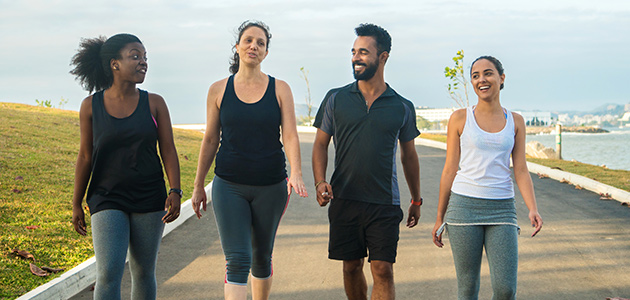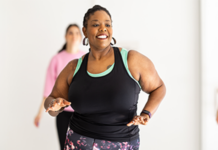
Have you ever noticed that when you get back from a walk around your neighborhood you often feel really good? There’s the satisfaction of having done something healthy for your body, of course, but there’s also that wonderful, relaxed feeling you get after a good, brisk walk.
The reason for that feel-good sensation is twofold. First, when you start exercising, your brain thinks that perhaps it’s because you are in danger and need to flee, so to protect itself – and you – from the stress it believes you’re under, your body releases a protein called BDNF (Brain-Derived Neurotrophic Factor).1 BDNF protects and repairs your memory neurons and acts as a reset switch – which accounts for that calm and relaxed feeling post-exercise. Our bodies also release endorphins during times of physical stress, which minimize any pain or discomfort we might feel.2
In short, exercise tricks our bodies into producing chemicals that make us feel great!
But of course, walking can do more than just lift your spirits. According to The Mayo Clinic2, regular brisk walking can help you to:
- maintain a healthy weight,
- prevent or manage various conditions, including heart disease, high blood pressure and type 2 diabetes;
- strengthen your bones and muscles;
- improve your mood; and
- improve your balance and coordination.
The faster and farther you walk, the greater the benefits – although any exercise is still incredibly valuable, especially as we age. But remember, it’s important to set realistic goals, and to check with your doctor first before beginning any new exercise regime – especially if you have any preexisting medical conditions.
If you get the all clear from your doctor, the good news is that walking is probably the easiest form of exercise and requires the least amount of equipment. All you really need is a pair of supportive walking shoes and you’re good to go! Visit Runner Click for their 2018 list of the top 10 best walking shoes.
Good shoes are a must, but in some cases you may actually need additional support to make walking safer. If you have any balance issues or a history of falls, it’s wise to bring along a walking stick, a cane or even a walker to ensure that you don’t take a tumble. A decline in balance is sometimes simply the result of inactivity, so starting up a regular walking routine may help you regain some of your lost equilibrium.
Improving your walking speed is associated with improvements in 8-year survival3, but that doesn’t mean you have to aim to achieve speed-walker status. It simply means that improving your personal walking speed is beneficial and a goal you should try to achieve.
Perhaps one of the nicest benefits associated with walking is that it gives you the opportunity to connect with the world – and the people – around you. It’s easy to get stuck in a rut where the only time we leave the house is to run errands or to go to appointments or work. We might quickly wave to a neighbor, but don’t stop to chat and catch up. Walking gives you the opportunity to really connect with the people in your neighborhood, and to create a true sense of community with those around you. You might even find others who want to join you in your daily walks, and you can motivate and encourage each other as you improve your health and wellbeing one step at a time.
SOURCES
2 https://www.mayoclinic.org/healthy-lifestyle/fitness/in-depth/walking/art-20046261
416403D CAN/US (07/18)




